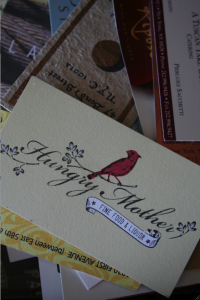Posts Tagged ‘Karina Taveras’
Turtle Stew and Chicharrón08.06.09
At first glance, you may think this pairing comes straight out of Bizarre Foods. However, at Luz Restaurant in the Cayman Islands, these two dishes are bestsellers on the menu. Staples of the Caymanian and Honduran kitchens come together in this casual Georgetown eatery which serves traditional Caymanian fare like turtle stew and stewed conch and a list of Honduran delicacies like garnaches (corn tortillas topped with cheese, cabbage and beans), chicharrón con yuca(fried pork rinds with yucca), and carne asada (roast beef). On my last trip to this sunny sanctuary, I learned about the important Honduran presence in the Caymans and that people from the Bay Islands of Honduras have been crossing the Caribbean Sea and settling in the Cayman Islands for years.
It started in the 40’s and 50’s, when local Caymanians traveled to the English-speaking Bay Islands by catboats for food and resources limited by the arid local soil. Located about 145 nautical miles away, they were easily accessible. The Bay Islands’ history includes many disputes between Spain and England during colonial times, so much so that English is mostly spoken here despite the fact that Spanish is the official language of Honduras.
To Caymanians, Spanish is synonimous with people from Honduras. It’s incredible to think how Latin America is alive in the most unexpected of places.
Watercress Salad Video07.26.09
Hi friends!
I’m excited to share with you the first Latinfoodie Video Blog. Go ahead and tell me what you think, and look out for our next webisode. We’ll continue to feature delicious recipes from kitchens all over Latin America.
¡Buen provecho!
Madre Hambre, otherwise known as Hungry Mother04.16.09
 I celebrated my Easter weekend not with a feast of dyed eggs and glazed ham, but succulent mussels from Northern Maine. Even though they were a far cry from the Spanish-styled garlic-sizzled version that I devoured on Sundays at La Casa de España, a local enclave run and frequented by the Spanish community in Santo Domingo, they were the basis of an unforgettable dish I found deep in the dark streets of Cambridge.
I celebrated my Easter weekend not with a feast of dyed eggs and glazed ham, but succulent mussels from Northern Maine. Even though they were a far cry from the Spanish-styled garlic-sizzled version that I devoured on Sundays at La Casa de España, a local enclave run and frequented by the Spanish community in Santo Domingo, they were the basis of an unforgettable dish I found deep in the dark streets of Cambridge.
It was an unusually chilly April night in a college town known for its carefree youth; yet inside the sophisticated-country-themed Hungry Mother, my dish was serious business. On the plate, the shells were shiny black cocktail dresses that covered silky, fleshy treasures peeking coyly at me. They bobbed in a delicate broth prepared with strips of tasso ham, green onion confetti, toasted breadcrumbs and a collection of Louisiana spices that left a dash of heat on your tongue.
I lifted each mussel from its shell, brought it to my lips and popped its sweet brininess in my mouth. Tearing off a small piece of homemade country bread, I began a ritual during that memorable meal of soaking up the fragrant broth between each muscled mouthful. Pure bliss.
Take a look at the great stuff these guys are creating in this Cambridge kitchen, and check out their eclectic menu here:

Food For Thought